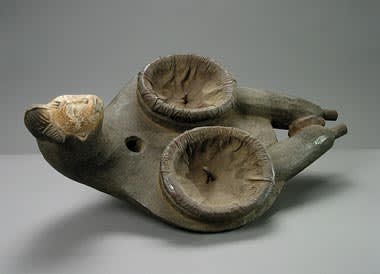Punu Wooden Bellows Surmounted by a Female Head, 20th Century CE
Wood
9 x 23.5
PF.6047
The decorative details adorned upon this bellows prove that it is not merely a functional device. Essential for the production of iron, the concentrated airflows of a bellow allowed the...
The decorative details adorned upon this bellows prove that it is not merely a functional device. Essential for the production of iron, the concentrated airflows of a bellow allowed the coals to attain a high enough heat in order to smelt the metal. In Africa, ironworkers were not thought of as simply craftsmen, but were accorded a quasi-religious status. They generally lived in seclusion and commanded a degree of political authority over their neighbors. The ironworker’s ability to turn charcoal and ironstone into wrought iron was believed to be more magical than industrial. Perhaps the clearest indication of the respect and status paid to ironworkers in Africa is this marvelous bellows. This functional device, a necessity for the production of iron, has been carefully carved and elegantly decorated with the head of a woman painted in the traditional Punu style. The overall form of the bellows is suggestively phallic, relating to the production of iron fertility goddesses. The head that crowns this piece heightens the beauty and elegance of this otherwise industrial tool. The beauty of this bellows reflects both the importance of iron in the daily lives of the tribe and the significant status of the ironworker within this society.



